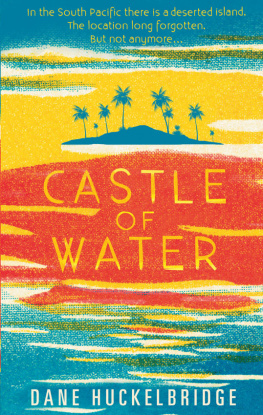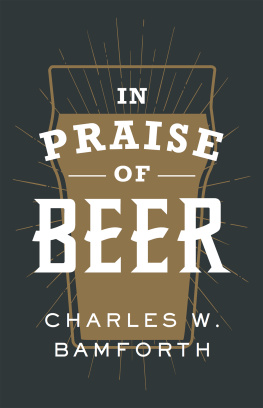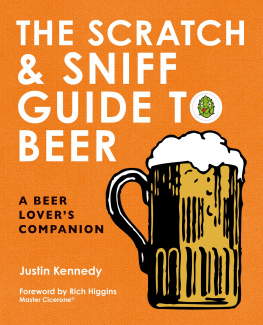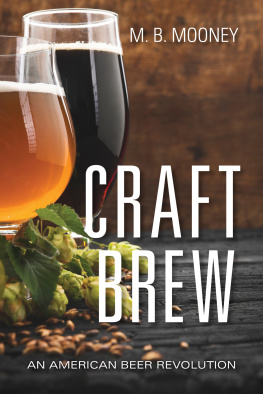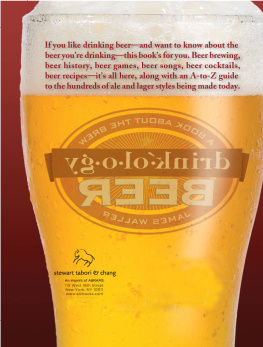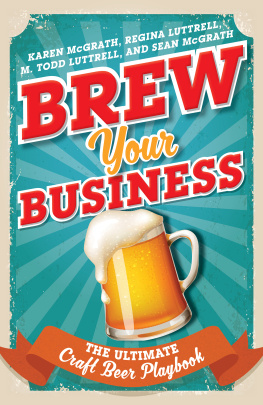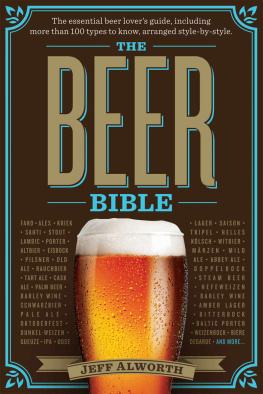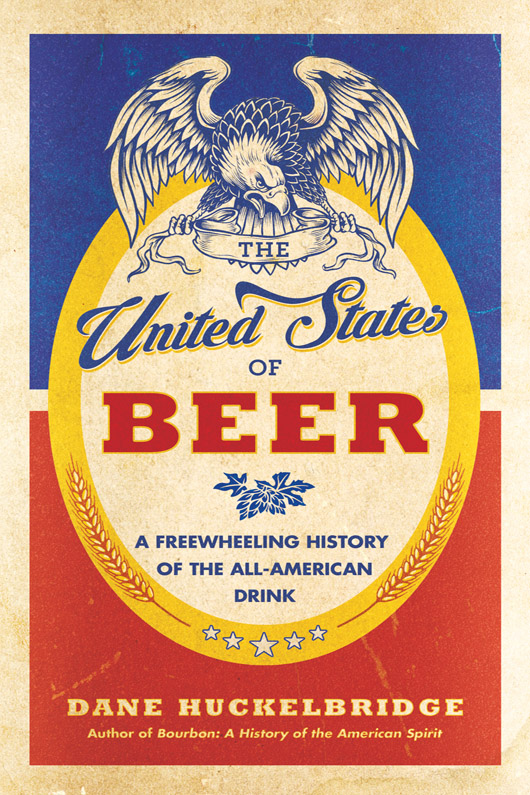You cant be a real country unless you have
a beer and an airline. It helps if you have
some kind of a football team, or some nuclear
weapons, but at the very least you need a
beer.
FRANK ZAPPA

Courtesy of AP Photo/Spina
CONTENTS
Guide
BEER, AS BENJAMIN FRANKLIN ALLEGEDLY QUIPPED, is proof that God loves us and wants us to be happy. It may indeed be thatyou wont encounter any debate on that point herebut it is a great many more things to our nation as well. To name just a few: Beer is the carbonated motor in a quarter-trillion-dollar American industry. Today it is second only to water and soft drinks when it comes to popularity among beverages, even beating out such staples as coffee and milk. It is a brew made for bonding, a point of local pride, and most important for our purposes, a beloved and reoccurring character in the story of a country. Disembark with the Pilgrims at Plymouth Rock, march with George Washington, or ride with Paul Revere, and what will you find? Why, youll find beer. It is a relative constant in a multifarious culture, and a liquefied shibboleth for a peopleor perhaps more accurate, conglomeration of peopleswho have been throughout the course of their history notoriously difficult to box in or pin down. Malt, yeast, and hops have formed a glue of sorts, perhaps not the only one, yet a surprisingly important binding ingredient. And in their many diverse expressions, they have enabled a variegated set of hyphenated identities to adhere, admirably if not perfectly.
Indeed, we Americans have never been shy about touting the richness of our own diversityin theory, anyway. Native Americans and explorers alike recognized the great abundance of our wildlife and the shimmering beauty of our varying landscapes. Immigrants and early settlers brought to our shores a wealth of creeds and a bounty of tongues, all of which shaped the multifaceted character of our nation, as they continue to do. Its written smack-dab on our currency, for Petes sake. E Pluribus, Unum: From Many, One. Even in they didnt always put it in practice, our founding fathers recognized the value of this inclusion, which preserved our Union when it teetered on the brink of collapse. No, a house divided against itself cannot stand. But an ideal of life, liberty, and the pursuit of happiness, propped up by a colorful caste of dreamers and doers from every far-flung corner of the globeyou neednt a powdered wig or a stovepipe hat to recognize that that makes for one hell of story. And possibly, a civilization quite unlike any other, in history or on earth.
Difference, as an abstract notion, is stitched into the fabric of the American experiencethough there have always been a few rips and tears. The Mohegan Indians never did care much for the more entrepreneurial Pequots. English Puritans could barely stomach the free-wheeling Dutch. And the voluptuary habits of French-speaking Creoles made stuffier minds in Washington wonder if the Louisiana Purchase had even been worth it. Geechees and Gullahs spoke a coastal southern dialect unintelligible to their inland kin, Tejanos in the Southwest confused the heck out of the Anglos with their fandangos, and when it comes to the Amish sects of the Pennsylvania Dutch, theyve been perplexing the rest of motor-loving America for the better part of a century.
And yet despite all our differences and affiliations, a common thirst for beer has prevailed, enjoyed consistently across the many years and layers of the American experience. That golden alchemy of barley and hops was as precious to the pilgrims and patriots of yore as it is to the Joe Six-Packs of today, with a dependable, practically culture-defining ubiquity. True, there is baseball and pop music, but both are relatively recent arrivals compared to the beloved brewdog, and neither tastes so good after mowing the lawn on a hot summer day.
Are we being cheeky or melodramatic, to attach so much drama and import to such an everyday drink? Perhaps. But its worth looking at the numbers. Just how much do we love beer? About six billion gallons worththats the amount of beer Americans consume on a yearly basis, with each drinking-age adult chugging back an average of nearly thirty gallons of pilsner, lager, porter, and ale. That number is impressive, and it stays relatively consistent across the board, whether youre in Alabama or Alaska, California or the District of Columbia. And thats in the present day, mind you. Take a glance at the drinking habits of the early colonial period or the Industrial Revolutionwhich we shall be doing in short orderand one simple and undeniable fact emerges: America is a nation of beer drinkers. We always have been, to varying degrees, and we most likely always will be.
As for explanations of beers ubiquity across the length and breadth of American civilization, there are several obvious avenues one might pursue. For starters, the role it has played in civilization itself. Wine may get the credit these days as the most civilized drink, but the brewing of beer and the cultivation of grainsthe latter of which allowed our ancient forbearers to give up hunting and gathering and start watching college football in those newfangled things called citiesshare a relationship thats practically symbiotic. Its impossible to say precisely when ancient humans first realized that a bowl full of bread left out in the rain might ferment into something intoxicatingly delicious, but pictorial and written evidence suggests that barley beer was widespread throughout the Near East by 4000 B.C., and very well may have existed in the Fertile Crescent as far back as 10,000 B.C. Sumerians lauded beer in the Epic of Gilgamesh, Mesopotamians were known to drink it through straws, Egyptian pharaohs consumed it on a daily basis, and Sophocles himself believed beer should be enjoyed frequently, albeit in moderation, and with plenty of bread and meat on the side. The Chinese discovered the recipe for malted rice-based beer almost ten thousand years ago, millet and sorghum-based brews have been well known to Africans since time immemorial, and multiple Native American civilizationswhose forebearers discovered America via the Bering Strait many thousands of years before Columbus stumbled upon the West Indieshave been incorporating corn beer into their feasts and rituals for thousands of years. Almost since the beginning, it seems, beer has rivaled water as the universal beverage.
Then there is also the basic fact of nutrition. Despite what junior high health class would lead you to believe, beer is actually brimming with precisely the sort of things a body needs to be healthy. In addition to its pure energy potentialbetween 100 and 300 calories per pint, depending on the style and consistencymost beers also contain considerable amounts of readily digested peptide-based proteins, soluble glucan-based fiber, minerals such as potassium, calcium, and magnesium, and a ton of essential water-soluble vitamins. Even the alcoholic portion of beer, although obviously deleterious when consumed in large quantities, has been suggested to improve heart health and increase lifespan when enjoyed in moderation. Our historical predecessors may not have been well educated on the chemical specifics of the beer they consumed, but they were well aware of the crucial role it played in their diets, especially during leaner historical periods when food was scarce and clean water difficult to come by. Beer, they found, filled in for both quite nicely.


